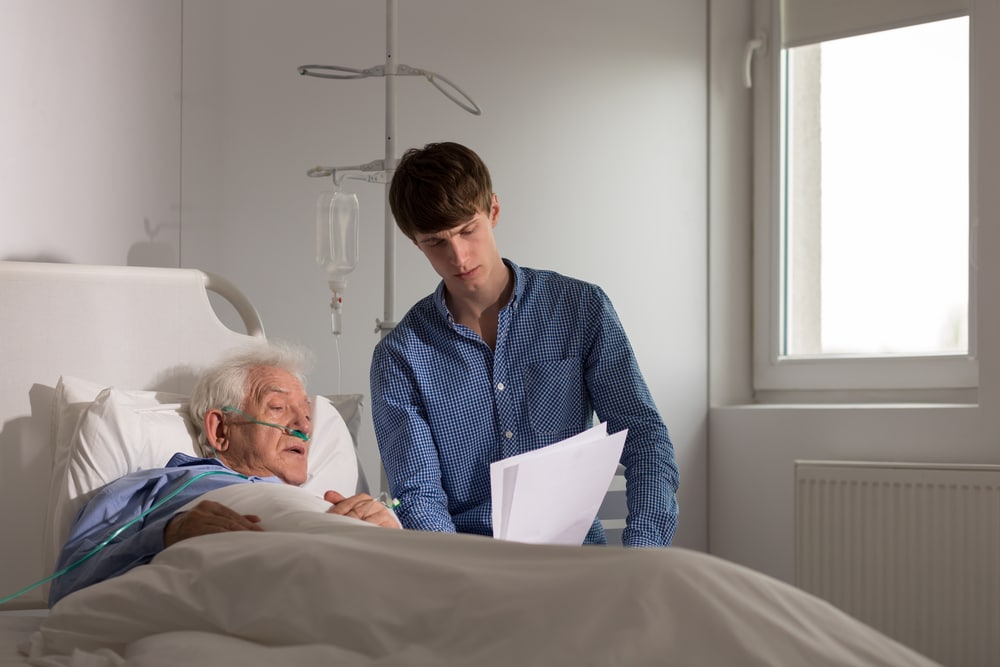When someone you hold dear is ready to enter hospice care in Fremont, California, you can rest easy knowing that they will have the physical, emotional, social and spiritual support they need. Doctors, nurses, speech and occupational therapists, social workers, counselors, chaplains and other skilled professionals do all they can to keep hospice patients comfortable – and if your loved one is like most, they’ll be able to receive hospice care at home rather than at a special facility.
All things considered, in-home hospice care is ideal, as it allows patients to go through the end-of-life process in a familiar place, one where they’ve enjoyed countless memories. Plus, hospice care at home makes it easier for people to spend time with loved ones who aren’t long for this world.
However, with in-home hospice, family members are tasked with meeting the day-to-day care needs of the patient. Typically, this burden is willingly accepted – but family caregivers often forget to take care of themselves. Here, we take a look at caregiver burnout in hospice care and offer tips on how to reduce the risk of it occurring.
 What is Caregiver Burnout in Hospice Care?
What is Caregiver Burnout in Hospice Care?
Caregiver burnout is a condition characterized by exhaustion on all fronts – physical, mental and emotional – as a result of focusing on the needs of another person. Burnout feels like a battery that has no charge or a car that has no gas, a vessel that lacks the energy it needs to function. Signs of the condition include:
- Extreme tiredness and fatigue
- Difficulty concentrating on any one task
- Overreacting when faced with minor issues
- Feelings of helplessness or hopelessness
- A change in appetite or in sleep pattern
- Getting sick more often than normal
- Losing interest in or cutting back on activities
Burnout among hospice caregivers is all too common. Studies have shown that over 60 percent of those who are charged with caring for hospice patients experience at least a few symptoms of burnout, and the condition can have a physical, psychological, financial and social impact on a caregiver’s life. People who are affected may experience:
- Anxiety or fear over doing something wrong and inadvertently causing harm
- Frustration that the hospice patient doesn’t want or appreciate assistance
- Guilt when taking care of their own needs or focusing on themselves
- Increasing negativity in regards to hospice care and their responsibilities
- A sense of being alone or secluded, with no one around to offer support
Taking care of someone in hospice care is incredibly challenging, so it’s no surprise that many caregivers experience burnout. However, there are ways to prevent the problem.
Strategies for Preventing Caregiver Burnout
If you’re about to take on the role of caregiver for a loved one in hospice care, you need to know how to keep yourself from feeling burned out. Eliminating all of the stress is impossible, but taking the following steps can help make the situation less mentally and emotionally taxing.
Take Care of Yourself
Fail to mind your own health, and you may not be able to provide the care your loved one needs. To prevent caregiver burnout, make a point of:
- Eating a well-balanced diet
- Making time for exercise
- Getting a good night’s sleep
Be as Prepared as Possible
We all fear the unknown, and if you want to meet the needs of someone in hospice care, you need to be informed. To that end, you should:
- Learn about your loved one’s illness and how the condition is likely to progress
- Consider your limits and whether to delegate some care tasks to other people
- Decide on a course of action for the future, when 24-hour care becomes a must
Don’t Hesitate to Ask for Help
With hospice care at home, no one has to go it alone. Help is available, and reaching out to others can help prevent caregiver burnout. You can call on:
- Friends and family who live near your loved one’s home in Fremont, California
- Community support groups, places of worship and local meal delivery programs
- Your doctor, a mental health professional, a chaplain or a hospice social worker
Taking Advantage of Hospice Respite Care
Caring for a hospice patient on a daily basis can be quite stressful, and when everything gets to be too much, family caregivers deserve a break. Hospice respite care services offer exactly that – time away to recharge and regain the physical and emotional fortitude to deal with the demands of caregiving.
When you’re feeling overwhelmed, requesting respite care can help you avoid caregiver burnout. And while you’re taking a breather, your loved one will be in good hands, receiving around-the-clock care at a local hospice facility, hospital or skilled nursing center. Respite care is available for up to five consecutive days at a time, and as the primary caregiver of a hospice patient, you can request a break more than once. The service may come with a small cost, but after taking some time off, you’ll be ready to make the caregiving journey a positive experience for you and your loved one.
Suncrest Hospice of Fremont is always available to answer questions and offer advice. To speak with a member of our team about hospice care at home, preventing caregiver burnout and getting support at the right time, contact our office in Fremont, California, today.


